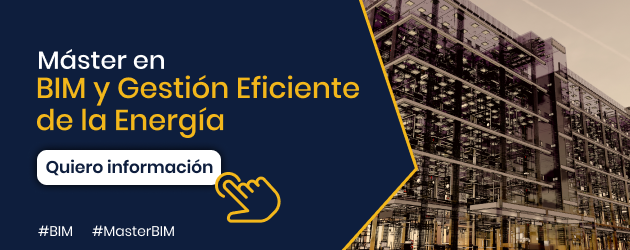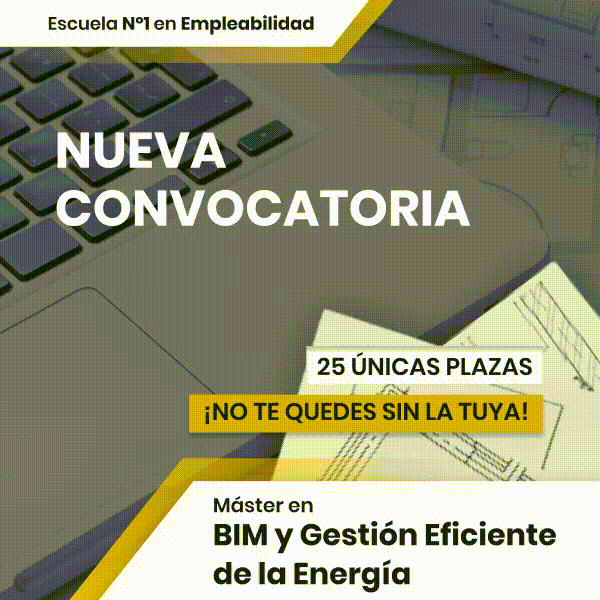This week the Royal Decree 178/2021, of March 23, by which Royal Decree 1027/2007 is modified, of July 20, which approves the Regulation of thermal installations in buildings.
This regulation is the main standard that governs thermal installations in buildings: air conditioning, heating, ventilation, water preparation for the ACS service and the heated pools. To design and manage facilities from the point of view of energy efficiency, we recommend the master in BIM and efficient energy management in EIP.
What does this modification consist of?
This modification is nothing more than a further update of the primitive RITE of 1998, which despite being repealed, maintained its name.
Thanks to being an advanced regulation, instead of being prescriptive, it opted for a performance and objectives based approach, both in terms of energy efficiency and safety, which allows the latest technology, both in equipment and materials, as well as in design and innovative solutions, to be included within it.
Over the years, this regulation It has been modified with the objective of adapting and adapting this standard to the different community directives relating to:
- Energy efficiency.
- Energy audits.
- Accreditation of service providers and energy auditors.
- Promotion of energy supply efficiency.
- Laws on free access to service activities and their exercise.
We must not lose sight of the fact that this regulation, like other previous ones, such as the Safety Regulations for Refrigeration Facilities (RD 552/2019), have two convergent objectives in caring for the environment.
The first is basically the use of less polluting systems and facilities, just like him use of renewable energies for processes, generated “in situ”.
The second is the improving facility performance, which ultimately results in a lower expenditure of natural resources, with the use also of renewable energies, which provide us with basic primary energy.
Type of regulation
This regulation is halfway between being a specific and own industrial safety regulations, And be part of another regulation such as the CTE.
For this reason, instructions with a character clearly developed for the safety of people and thermal installations, with instructions included in increasing the quality of the materials and systems that make up buildings with the aim of reducing thermal demand, as well as improving thermal installations in buildings, promoting increased installation performance.

On this occasion, has been adapted to the different Community Directives contributing:
- New definitions and modification of existing ones, such as technical installation,
- New obligations relating to automation and control systems of these technical installations, the measurement and evaluation of the general energy efficiency in these installations and the modification of the inspection regime
- Obligations related to consumption accounting heating, cooling and domestic hot water, as well as the need to have a remote reading of these and the rights related to billing and information on billing or consumption.
- Promotion of energy use from renewable sources.
- Establishes a regulatory framework for ecodesign requirements applicable to energy-related products
- Establish a framework for labeling energetic.
- Various requirements are introduced for thermal installations in order to contribute to the energy efficiency measures, it will contribute to the fulfillment of the final energy savings objective, the emissions reduction commitments and the planned reduction in primary energy consumption is 39.5 % in 2030 that they will achieve thanks to the renovation of residential equipment, and in the tertiary sector to the energy efficiency of the facilities and cold generating equipment and large air conditioning installations, as well as infrastructure.
Modification in the articles
Regarding the articles, highlight, as a summary, the following points:
In general: ecological design and use of renewable energy or use of residual energy
- Is considered reform, Therefore, the current modification of the RITE must be complied with, but only in the part of the installation that is affected by it.
- the incorporation of new subsystems air conditioning or domestic hot water production
- the modification of existing ones, replacement of a heat or cold generator with another with different characteristics, or with another with similar characteristics, although this does not imply a modification of the project or technical memory, or the interconnection with an urban heating or cooling network.
- the expansion of the number of generating equipment of heat or cold.
- the change in the type of energy used or the incorporation of renewable energies.
- the change of intended use of the building.
- It is clarified that in the Technical Instructions the version of the specified standard, with the exception of those EN or EN ISO standards whose reference appears published in the Official Journal of the European Union, in which it must be related to the version of said reference. Generally, these standards published in the OJEU are related to ErP or Labeling products.
- Equipment or elements of the installation that have a higher power to the values indicated by the ErP regulations, although they are not affected by ecological design, as of July 1 will have at least the requirements applicable to the equipment that they are affected. As a consequence of this, if we had equipment, manufactured before the entry into force of the ErP regulation, that affects it, we could use it in a facility. With the new modification, we will not be able to use it.
- Before starting up the installations, they must be registered and also provide a copy of this registration to the distributor or marketer. The supply of energy without this document is prohibited.
Modification in the complementary technical instructions
- For him dimensioned of the facilities:
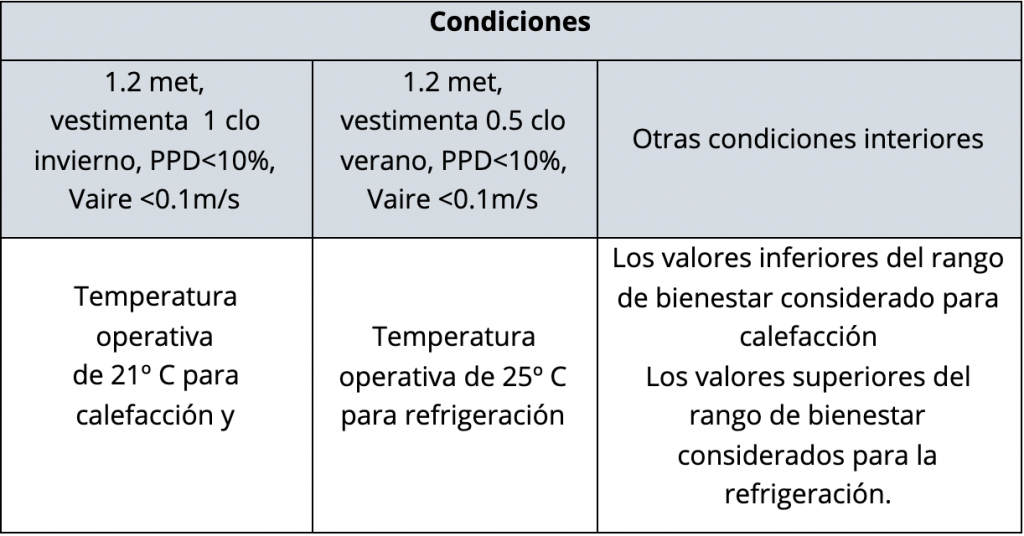
- For him calculation of maximum thermal loads:

- Atmospheric boilers are prohibited, except B3x, and for efficiency reasons, can only be installed;
- condensing boilers or with some type of recuperator,
- or boilers with non-wood fuels without determining efficiency
- and for olive pits 80%.
- The maximum temperature The drive temperature for the heating emitters will be 60º C, in this way there is a clear commitment to low temperature emitter systems or underfloor heating, due to their efficiency, so that the aerothermal equipment will be able to be used and improve the performance of the units. condensing boilers.
- The fuel burners gaseous fuels will be modulating and those with liquid fuels of more than 70 kW
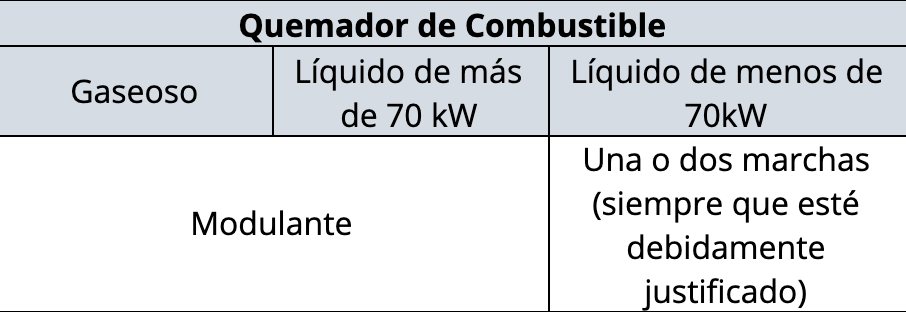
- In the ACS installations, it must be justified that putting conventional auxiliary energy into the renewable tank does not represent a decrease in the use of renewable energy. (as it is no longer regulated by the DB HE4, it is regulated by the RITE)
- In the installations of more than 70 kW with cold generating equipment, this will have a minimum of 4 steps, the maximum value being the minimum step of the 25%. For installations with powers less than 70 kW, the partialization will be staggered.

- With respect to thermal isolation The following developments have occurred:
- You can opt for the simplified or alternative method (the thickness will be such that the thickness causes minor losses of 4% of the power they carry)
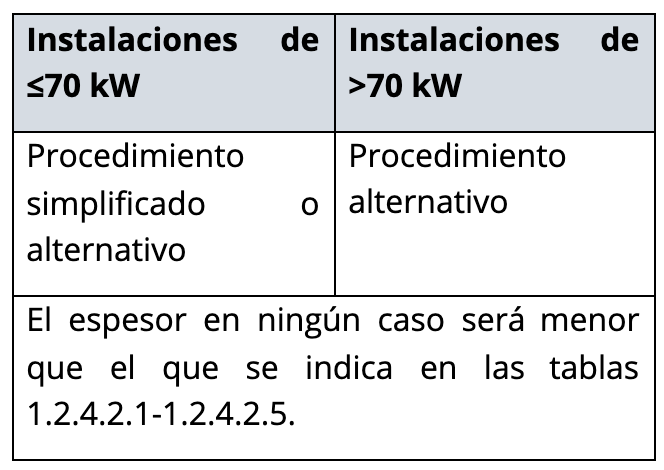
Using the alternative procedure, in large installations with a long length of pipes, more than the thicknesses indicated in the tables will probably have to be insulated to enter the 4% loss values.
- Something that was already indicated regarding the thicknesses of ACS installations, using table 1.2.4.2
- They modify the sealing classes of the ducts, the minimum value being ATC class 4, (equivalent to the old B)
- The thermal emitters are will be sized with heating flow temperature lower than 60º C and cooling greater than 7º C.
- For the heat generators They will be equipped with a control system where the water temperature will be varied depending on the outside conditions.

- To control outdoor air quality In places with high occupancy such as cinemas, theaters, assembly halls, sports venues and similar, IDA-C6 will be used. (Control system that measures indoor air parameters CO2 or VOCs, volatile organic compounds)
- It is indicated that the for solar installations Differential control has to be used, which was previously in DB HE4.
- For the combined ventilation and heating installations or with ventilation and heating with a power greater than 290 kW, a BMS system will have to be provided.
- He flow rate of air expelled to the outside from which energy recovery must be carried out, has been modified to 0.28 m3/s (1008 m3/h).
- One has to compare which system produces more advantages, Cogeneration, or renewable energies typical of thermal installations (biomass, solar thermal, aerothermal, hydrothermal or geothermal)
- One has to evaluate globally through overall energy efficiency, and to do this the operation must be carried out by dividing the energy demand of the building services by the energy consumption necessary to serve the services (air conditioning, DHW, ventilation or combination thereof).
- He maintenance of solar thermal installations They are included in the RITE because it has been eliminated within the CTE.
- In relation to inspections, only sand will be carried out in installations of more than 70 kW, with a periodicity of 4 years, and a complete inspection will be carried out 15 years after its first installation certificate, assessing the power of the generators.
- The figure of the independent expert appears for inspections.


